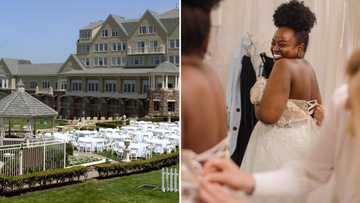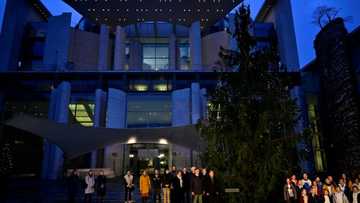Zulu culture, food, traditional attire, wedding ceremony, dance and pictures
The Zulu community is known for its rich traditions and culture. The Zulu culture, food, and clothing are pretty distinct. People from this community, especially those in rural areas, are known for their craft-making, weaving, beadwork, and pottery.
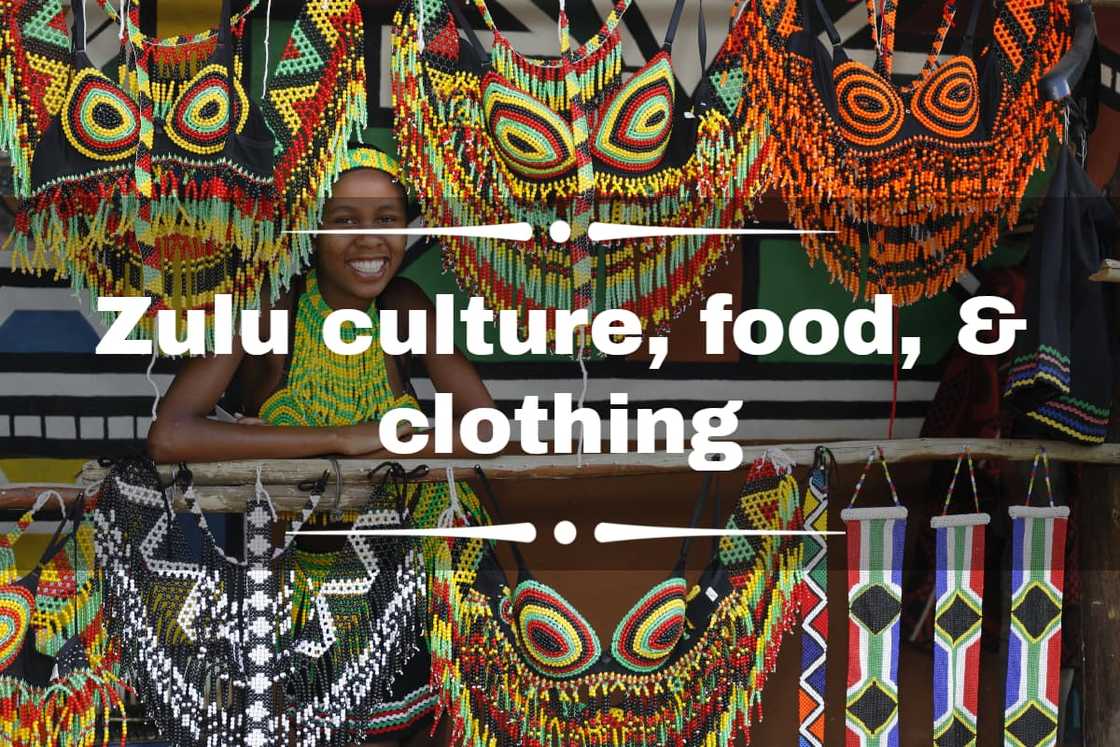
Source: Getty Images
Did you know the Zulu people usually call themselves "The People of the Heavens?" The community is the largest ethnic community in South Africa, with about nine million people. Learn about the Zulu culture, food, and clothing today.
All about the Zulu culture: food, clothing, and more
A look at the history of the Zulu community reveals its people are descendants of a chief from the Congo area. They migrated south in the 16th century migrated south and settled in present-day South Africa.
Origin
The Zulu community's history can be traced back to the 14th century. The community descended from the Nguni-speaking tribe.
People from this community were known for their military exploits. Other communities feared the Zulu Kingdom. They migrated south in the 16th century.
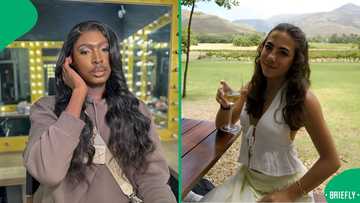
Read also
Lost in translation: UK woman shows Cape Town mansion and 2 other expats rubbing SA the wrong way
The kingdom's most popular leader was Shaka, a young Zulu prince who united his kingdom. He led the ethnic group from 1816 to 1828. During Shaka's era, young men received training in fighting and being warriors who defended their community.
When the British took over South Africa as one of its colonies, the kingdom was subdivided into 13 chiefdoms. This weakened the community.
Location
There are about nine million Zulu people. A significant percentage resides in KwaZulu-Natal Province. The province is semi-fertile.
It has a flat coastal plain, highlands to the west, and multiple rivers. Due to rural-urban migration, people from this community are spread across South Africa and the neighbouring countries.
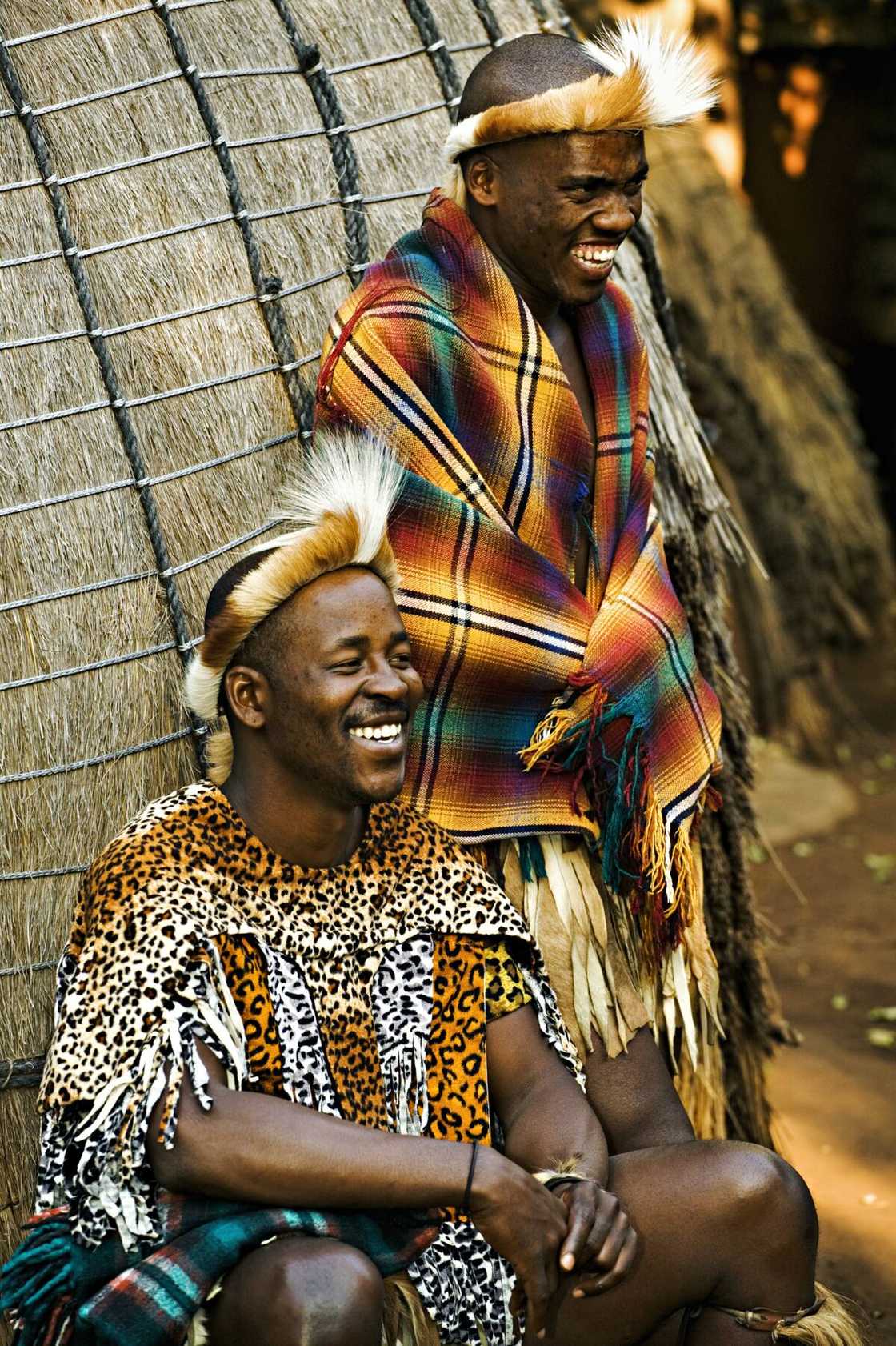
Source: Getty Images
Language
The traditional language in this community is called isiZulu. Many people find the language fascinating because it is characterised by numerous clicks.
The language also features many idioms and proverbs. A significant percentage of the population also speaks the English language.
Folklore
The Zulu traditional beliefs feature ancestral spirits called abaphansi or amadlozi. These are the spirits of the dead with the power to heal or afflict.

Read also
"They deserve R100K a month": School teachers visit top achiever at home with gifts, SA touched
The community believes in a Supreme Being called UMvelinqangi or uNkulunkulu and in life after death. UMvelinqangi has never appeared to men.
As a result, no ceremonies are performed for the Supreme Being. Instead, abaphansi or amadlozi mediate between people and UMvelinqangi.
Religion
The Zulus believe in ancestral spirits, including abaphansi or amadlozi. Traditionally, people made sacrifices and offerings to the spirits for happiness, good health, and protection.
People believed that spirits returned to the world in the form of illnesses, dreams, and even snakes. They also believed that angry spirits caused diseases and bad luck.
Many people converted to Christianity under colonialism. Today, a significant percentage of the population is Christian. Some still carry traditional beliefs.
Rites of passage
The main rites of passage are birth, puberty, marriage, and death. All these are marked by sacrificing animals to ancestors.
Birth
Birth in this community is a colourful affair. Only women are allowed during birth. Soon after birth, children are cleaned in the umsamo (a sacred section at the back of the house) with water and special medicine called intelezi.
Various rituals are performed to strengthen the child. Both mother and newborn are isolated from the rest of the family until the baby's cord falls off.
After it falls off, the mother is purified before resuming normal life. The house is then cleaned thoroughly. The father of the house is then allowed to meet his child. Plenty of food and beer is availed to thank the midwives for assisting in the birth.
Traditionally, it was considered a great misfortune to be childless or only bear girls. Marriage was not complete until a boy was born. This notion has changed, although some still stick to it.
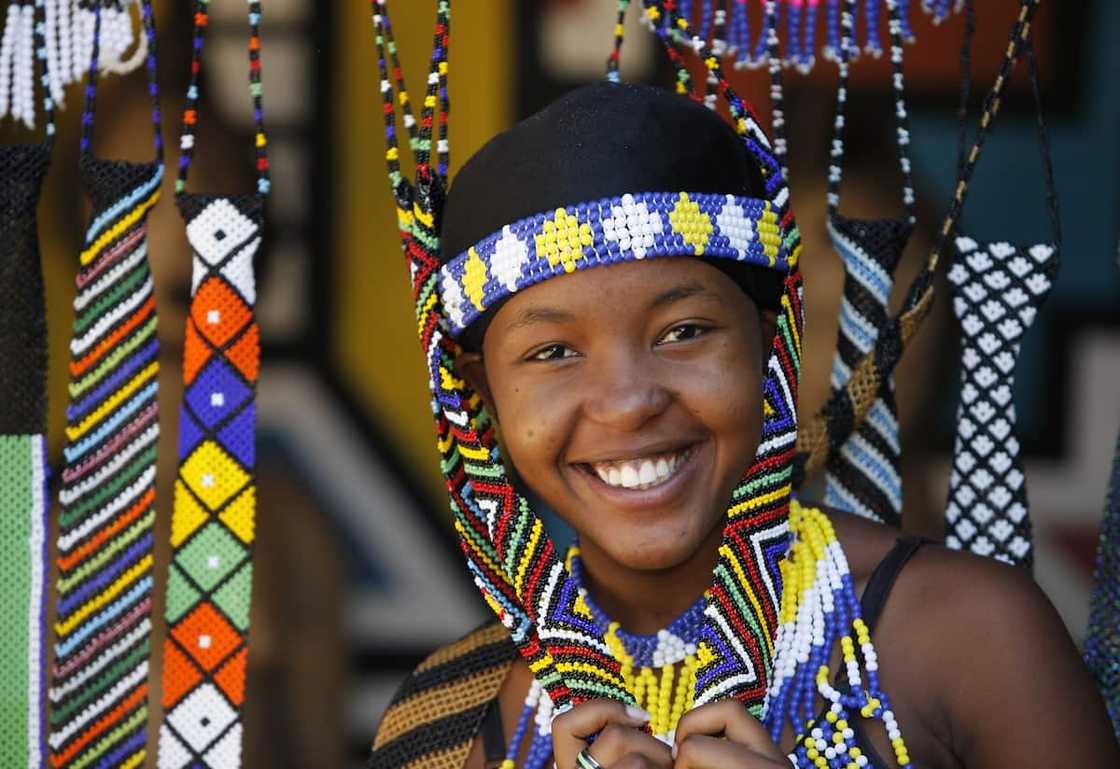
Source: Getty Images
Puberty
The celebration of puberty is called umemulo. This ceremony is for girls, and it marks their transition into womanhood. A week before the ceremony, the girl and her izimpelesi (maidens) are put into seclusion and taught about womanhood.
On the morning of the ceremony, a girl undergoes a chastity test conducted by a ngobese (woman). Ululations hit the air for a chase girl. She and her maidens then bathe in the river and wear traditional outfits in readiness for the ceremony.
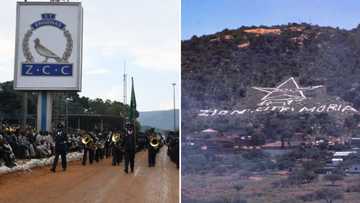
Read also
St Engenas branch of ZCC to descend on Moria for Easter pilgrimage after 3-year pause, ZCC-star won’t attend
During the ceremony, a cow is slaught*red. The girl is then presented with a spear as a symbol of their victory and strength. When she gets home, she throws the spear.
The father or the head of the household runs towards where the spear lands, shouting words of praise and dancing. The girl then blows a whistle to alert everyone it is time to gift her. After the ceremony, the girl is declared ready for marriage.
Traditional Zulu wedding
Before a wedding, you people are allowed to date. A woman sends a love letter to the young man she is interested in. Dating begins when the young man declares his love for her.
The relationship remains private until the man informs her parents he intends to marry their daughter. There are three main stages when getting married. The first is lobola or dowry payment, izibizo (giving of gifts to a bride's family), and finally, the umabo or traditional wedding.
On the D-day, a traditional wedding ceremony is held at the groom's home. The bride leaves her home early, covered in a blanket.
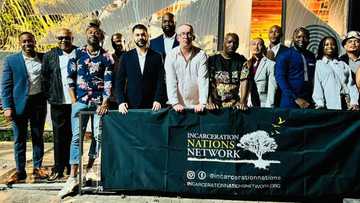
Read also
2 SA former convicts advocate for education and prison reform as inaugural Global Freedom Fellows
Her father leads her to her new family. The official ceremony starts at around midday and is characterised by plenty of food, dancing, and exchanging gifts.
Death
People from this community believe that a body must be buried in the ground out of respect. After death, a body undergoes elaborate rituals of purification and cleansing before interment.
Family life and relationships
In this community, a family or umndeni comprises everyone living in a particular homestead. Most rural families include extended relatives.
Respect for older persons in the household and the rest of the community is valued. The family system is patriarchal, meaning the man is the authority figure in the home. Polygamy is common if the man can provide for his wives and children.
Traditionally, women did not work. Instead, they stayed home and took care of family matters. This is gradually changing because more women are educated and able to earn a living.
The Zulu community is warm, and people are amicable. They believe in ubuntu, which means humanness or good disposition. People greet each other whenever they meet. It is customary for younger people to initiate greetings when they meet their seniors.
Traditional Zulu attire
Traditional attire in this community is bright and colourful. Men, women, and children accessorise with beads.
Traditional male attire
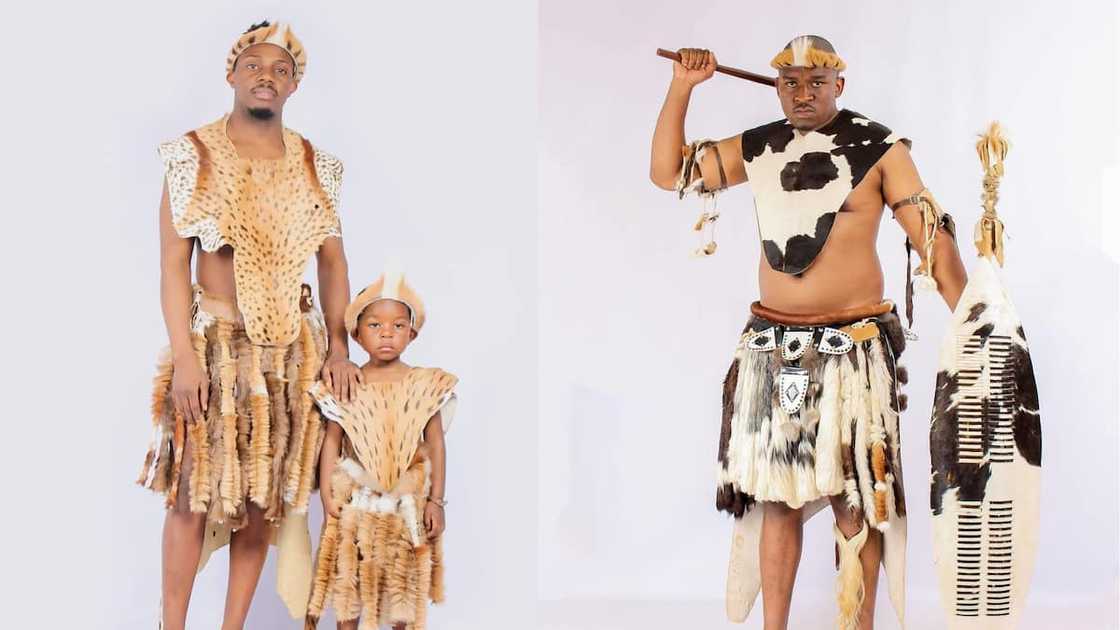
Source: UGC
If you have been wondering about the names of traditional Zulu attire, fret not. Men wear amabheshu made of animal hides and skins. Amabheshu looks like a waist apron.
They also wear frilly goatskin bands on their arms and legs. They also decorate their heads with feathers and fur. Prince Misuzulu, the the reigning King of the Zulu nation, is known for wearing this attire often.
Female Zulu traditional attire
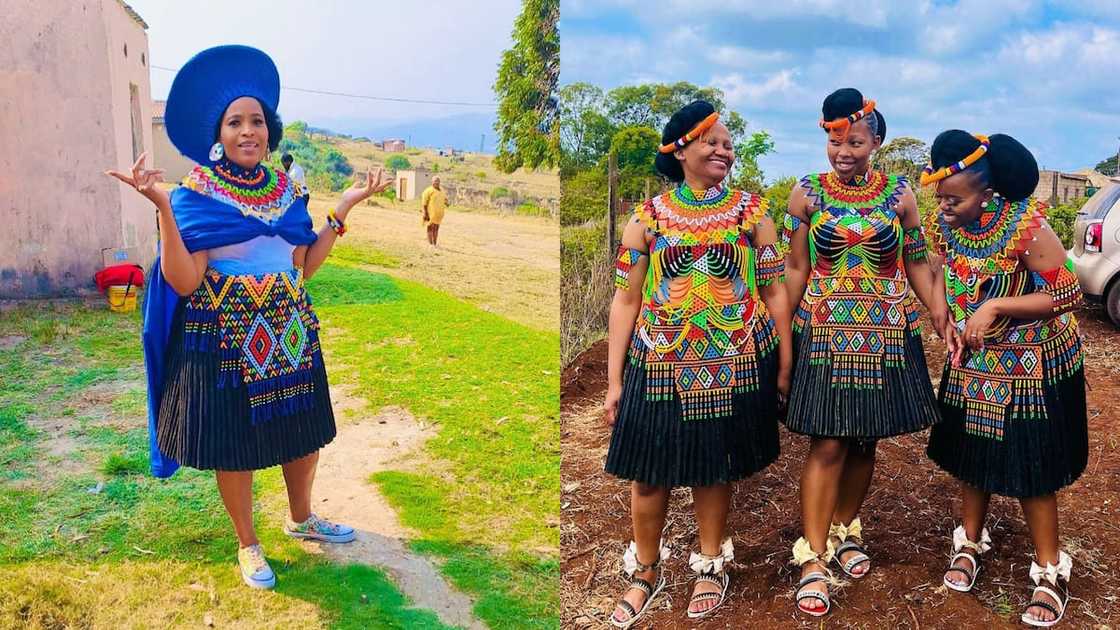
Source: UGC
Married women wear an outfit called isidwaba. It is a black skirt made of animal skin. They also wear t-shirts to cover the top parts of their bodies.
On the other hand, unmarried women wear strings of beads to cover the chest area. Today, clothes are modernised. They also wear t-shirts or vests beneath the strings of beads to avoid exposing their bodies.
Traditional food for Zulu people
Besides the colourful Zulu traditional dresses, this ethnic group is known for its delicious food. The community keeps cattle and farms. As a result, most meals consist of cow and plant products.
Sharing the same plate or cup is a sign of friendship. Children are normally served in a large plate or basin to date. If you are looking for pictures of traditional Zulu food, check out some of them.
Uphuthu is cooked coarsely ground maize. It is normally served with amazi or curdled milk, as seen above.
Amadumbe means boiled yams.
Ujeqe is a type of steamed bread, usually served with curry or meat.
Umqombothi is a traditional beer. It is rich in nutrients.
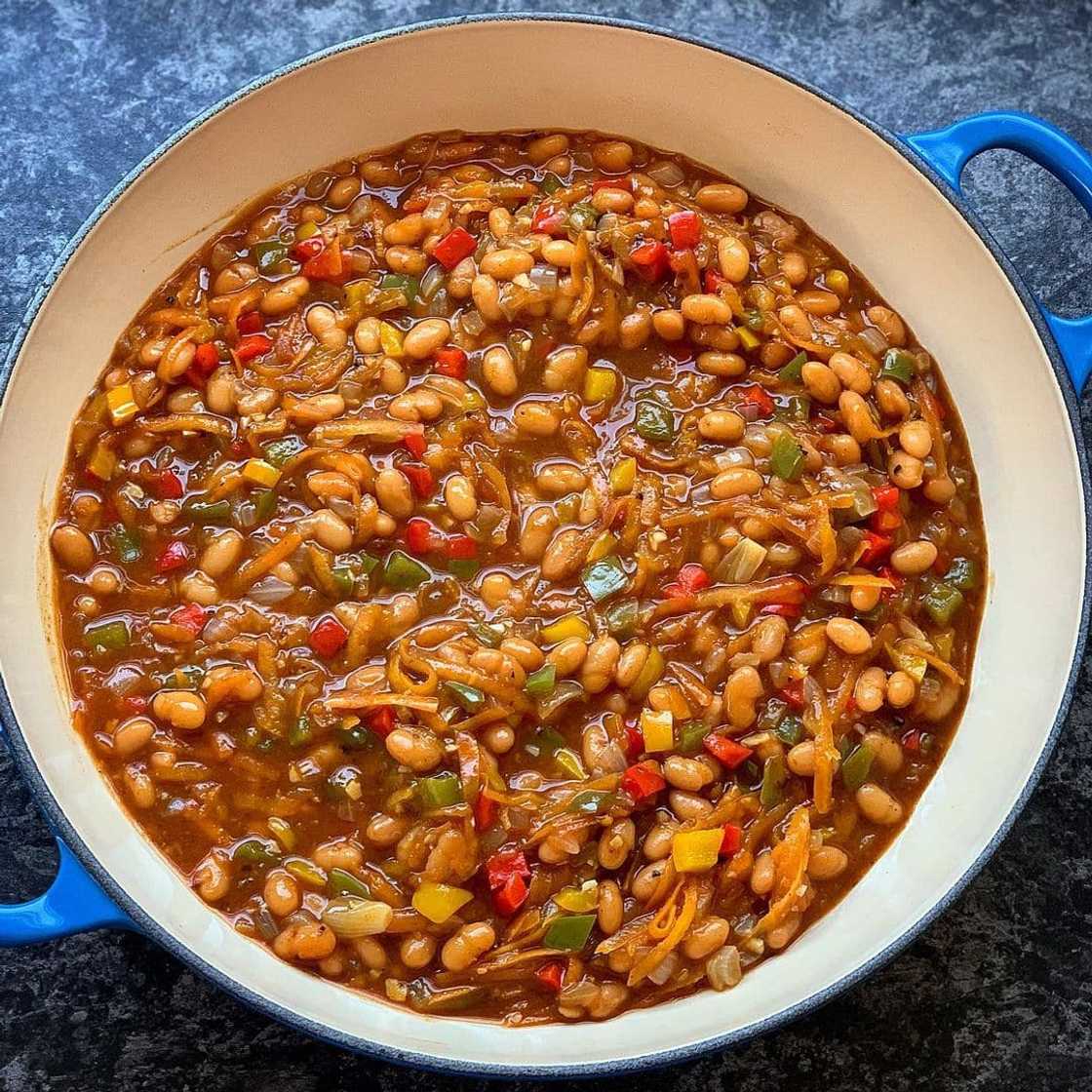
Source: Instagram
Chakalaka is a refreshing, spicy tomato bean relish.
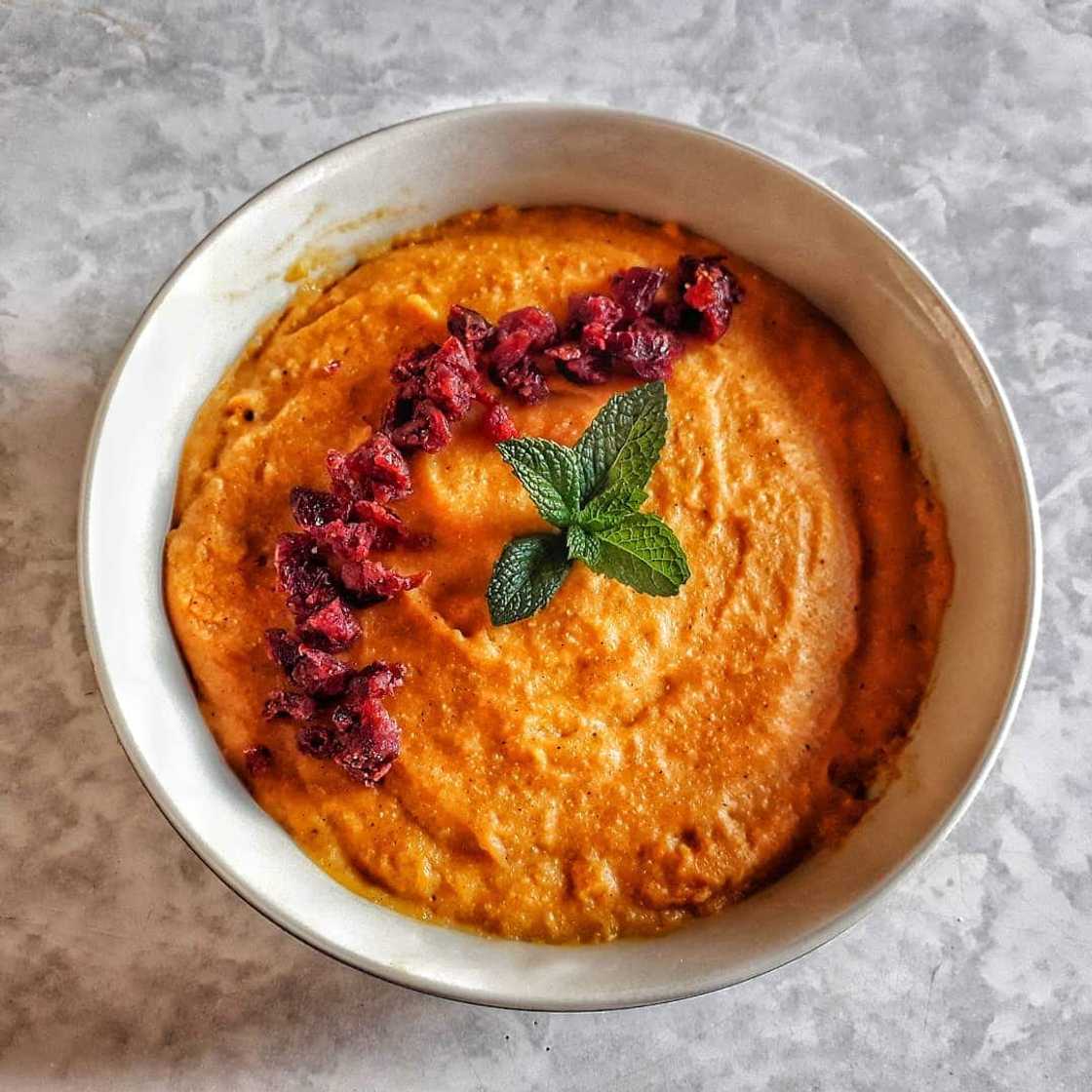
Source: Instagram
Isijingi is a mixture of pumpkin and maize.
Other delicious traditional Zulu foods in South Africa are explored below.
- Isibhede and phutu (porridge)
- Corn custard
- Roast meat
- iDombolo (dumplings)
- Idli (rice cake)
- Umfino (cornmeal)
- Isitambu (mixture of maize and sugar beans)
- Isijeza (mixture of pumpkin, impuphu, and sugar)
Crafts and hobbies
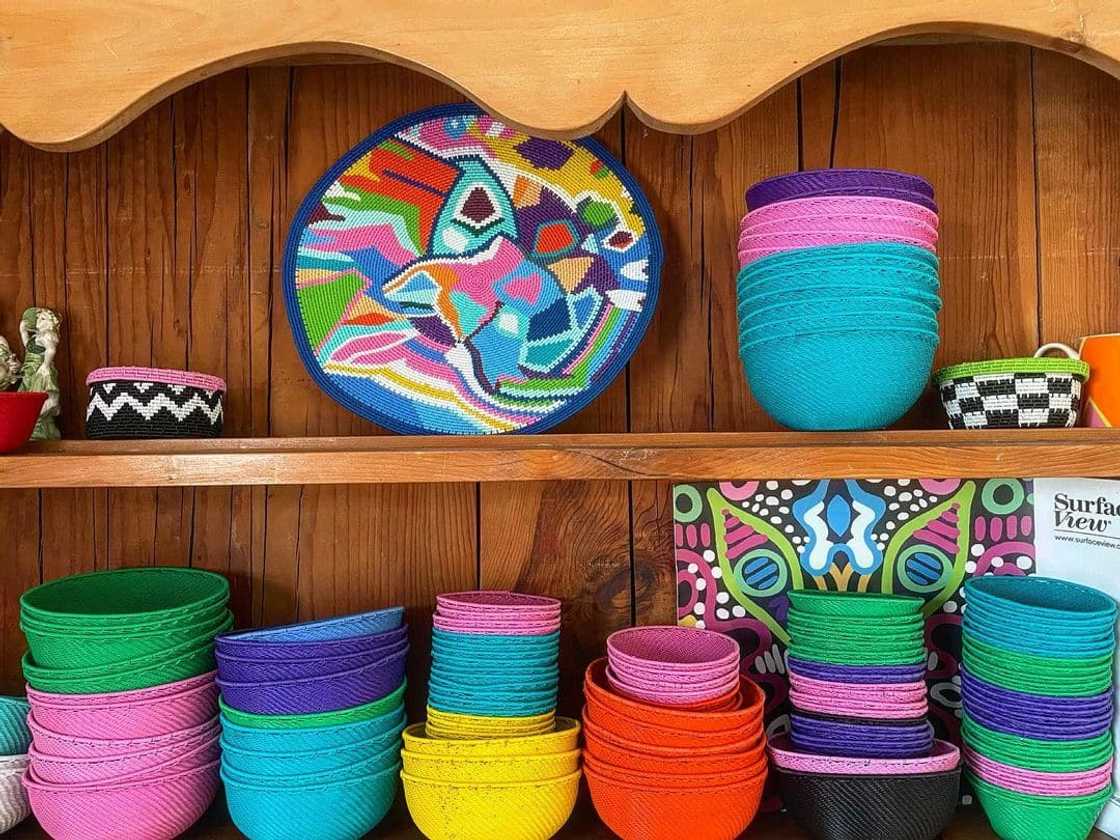
Source: UGC
The Zulu people, especially those in rural areas, often engage in crafts like weaving, pottery, and beadwork. Women and children often weave products for everyday use, e.g., baskets and mats. They also decorate gourds and calabashes.
Women also engage in colourful beadwork. On the other hand, men and boys carve household objects and ornaments from wood and bone, e.g., headrests, trays, and chairs.
Zulu songs and recreation
Traditional Zulu ceremonies and rituals are characterised by singing and dancing. The music incorporates rhythm, melody and harmony. Formal invitations are not needed for social functions, and it is good manners to serve food to all invited and uninvited guests.
What traditional clothes do Zulus wear?
Men wear amabheshu, while women wear isidwaba. They accessorise their outfits with colourful beads and headgear made of fur and feathers.
What do Zulus do when a baby is born?
Men keep off when a baby is born, and the newborn and mother are secluded until the umbilical cord falls off. Various rituals are performed before the father meets his child.
How many Zulu people are there?
There are about nine million Zulu people today. A significant percentage of this population is based in KwaZulu-Natal Province.
The Zulu culture, food, and clothing are rich and colourful. People from this community are known for their colourful beadwork, crafts, woven products, and pottery.
READ ALSO: Top 20 interesting facts about South Africa you ought to know | Details for travellers
Briefly.co.za recently published interesting facts about South Africa. South Africa is one of the wealthiest countries on the continent in terms of cultural and natural diversity.
The country has become a favourite tourist destination for travellers from around the world. It has good weather, many natural resources, and geographical wonders.
Source: Briefly News

Peris Walubengo (Lifestyle writer) Peris Walubengo has vast experience in search engine optimization through digital content generation, research, editing, and proofreading. She joined Briefly.co.za in November 2019 and completed the AFP course on Digital Investigation Techniques. You can email her at perisrodah254@gmail.com.

Cyprine Apindi (Lifestyle writer) Cyprine Apindi is a content creator and educator with over six years of experience. She holds a Diploma in Mass Communication and a Bachelor’s degree in Nutrition and Dietetics from Kenyatta University. Cyprine joined Briefly.co.za in mid-2021, covering multiple topics, including finance, entertainment, sports, and lifestyle. In 2023, she finished the AFP course on Digital Investigation Techniques. She received the Writer of the Year awards in 2023 and 2024. In 2024, she completed the Google News Initiative course. Email: cyprineapindi@gmail.com

